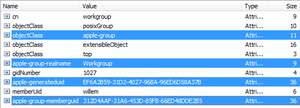Ziggo Internet, Juniper Firewalls and DHCP
 Thursday, August 9, 2012 at 18:20
Thursday, August 9, 2012 at 18:20 At the house I have currently two ISP delivering broadband. Well, broadband isn't the correct word, since the the one of them is only a mere 256kbps (I think). The other is a 'whopping' 20Mbps.
The 20Mb connection is provided by XS4ALL, and the 256kbps is for free (if you have a phone subscription with Ziggo). The 256kbp is the minimum they provide to transport the phone calls, but if you're a masochist you can also browse the internet over that connection.
So, two ISP @ home. Combine that with a Juniper SRX firewall, and a dual ISP setup is born. The theory of that setup is that I connect both ISP's to the firewall, and use the 20Mb line as a default internet connection, but when that one dies, I automatically get switched to the backup line (256kbps).



